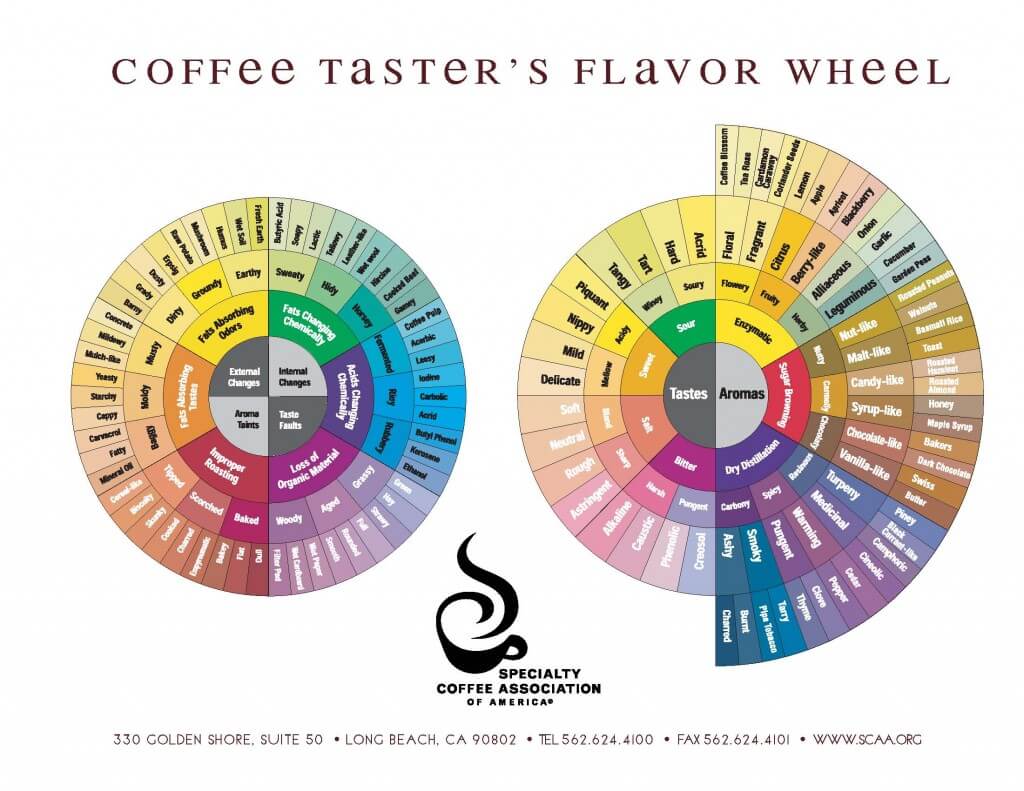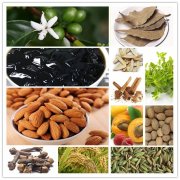Interpretation of the defective flavor in the coffee flavor wheel how does the defective flavor of coffee come into being?

Professional coffee knowledge exchange More coffee bean information Please pay attention to coffee workshop (Weixin Official Accounts cafe_style)
7 factors that affect the flavor and aroma of coffee beans
In the process of brewing coffee, we are all looking forward to the full room full of fragrant moving moments:
Caramel, flowers, berries, nuts, honey, tea... and other wonderful and complex aromas
It's definitely the best thing about coffee.
Green coffee beans can detect more than 300 aroma compounds, and mature coffee beans are more than 850, which is amazing in complexity (this data is quoted from fine coffee science)
But in the baking or brewing process, there will still be a bad smell, which is of course abhorrent
It is necessary to select high quality raw beans, filter defective beans and adjust the brewing variables properly in order to maintain the wonderful aroma and flash the strange taste.
And understanding is the first step in prevention and in finding solutions.
Therefore, the senior shared a translated article explaining the cause of the strange smell of coffee for everyone's reference
Although not too new article, but still have solid practical experience on the generation of strange smell (and is written by celebrities)
You can still take a serious look, and control the hands of Doudou, find out the problem Oh!!
Another article is quoted from Kuka Coffee blog, but Kuka should not be the original translator, senior can not find, in order to be loyal to the original translator, all the following content has not changed, if some translations do not meet everyone's experience, please see English for comparison.
The pictures were made by the seniors themselves, so that everyone can imagine while looking at them.
Five Stages of Coffee Aroma Change
This article is mainly translated from SCAA's "The Coffee Cuppers 'Handbook," 3rd Edition, Chapter 2
Fragrance spoilage and defects. Written by Ted R. Lingle
The aroma of coffee is the main purpose of buying coffee and drinking coffee.
Perhaps some people drink coffee to enjoy the strong coffee flavor, do not care much about how much flavor, let alone how the bar prepared the cup of coffee he chose.
The strength of the coffee is what these guests want. Still, we can't deny that most people are moved when they enjoy the aroma of coffee.
Aroma, and only aroma, is the highest value of coffee. Coffee lacks flavor, like a person without temperament. Temperament can come in different forms and quantities, and fragrances have different components and presentations.
Coffee that loses its flavor will always give people a defective feeling. Spend money on coffee, mainly for its aroma.
We will look through this article at the possible reasons why coffee tastes bad or loses flavor.
In the past, we have repeatedly mentioned that the quality of a cup of coffee is influenced by four important stages, namely:
1. Coffee plantation management: including varieties, planting environment and climatic conditions, fertilization, irrigation, pest control, etc.
2. Post-harvest treatment methods: including harvesting methods, post-harvest preservation, post-processing methods, cleaning and sanitation of treatment sites, drying methods, storage methods and environment, and shelling process. There is also the transportation process.
3. Roasting method: including the understanding, operation and preservation of roasted coffee beans.
4. Brewing coffee.
That is to say, in each of the above stages, the quality of coffee is being shaped, and at the same time, the quality of coffee may be defective due to improper operation.
The following are the key points mentioned in the "Coffee Cup Tester Manual", which is about the corruption of coffee bean aroma and the timing of defects, which is worthy of our coffee workers 'reference:
The first stage occurs during harvesting and drying.
When farmers dry coffee fruits or beans, it will affect the aroma of coffee beans, and in serious cases, it will cause rancid smell.
If the fruit is left in the coffee garden too long at harvest time, the bad smell will continue to be produced, and the enzymes inside the fruit will start to break down the substances inside the seeds.
Due to chemical changes, arabica beans produce a "rioy" and robusta a "rubbery" flavor.
Rubbery
In the drying stage, if the coffee fruit is placed in a high temperature and humid environment, the internal enzyme action accelerates and produces a "fermented flavor".
(Note: This is why it is repeatedly emphasized that the peeling of coffee fruits should be completed on the same day after harvest, or within 24 hours, and not piled up for too long.)
fermented
Generally, coffee beans are spread on the concrete floor, or on a high drying bed, or on a plastic cloth.
The main thing is to keep the place clean and clean and avoid pollution. If coffee beans are kept in an unclean place, especially on a dry dirt floor, the oil inside the beans absorbs the smell of the soil and produces an "earthy" smell.
earthy
If the coffee beans are placed in wet places, it is easy to cause mildew and produce a "musty smell". If mechanically dried, the drying speed is too fast, the oil inside the beans is decomposed, resulting in a "skin odor"(hidy).
Skin smell hidy
(Note: It feels like mold is happening slowly.) In fact, because of the humid environment or rain, the speed of coffee beans moldy is very fast, about 1-2 days, you can see the appearance of moldy phenomenon. In fact, when you see this moldy appearance, it has been moldy for some time.)
The second stage occurs during storage and is the aging of coffee beans.
This is the period from harvest and drying to baking.
In the first few months after harvest and processing, coffee beans have a distinctive grassy smell, like freshly harvested alfalfa, called "grassy." grassy
The enzymes in the raw beans continue to function, and after a few months, this aroma characteristic gradually decreases. Until shipped for sale, they are called "new crop," meaning "beans in season."
(Note: Fresh beans that have just been harvested and produced have their own characteristics and also have their inevitable smell. This is why foreign beans are not in a hurry to ship after harvesting and post-processing. It is to reduce the smell of green.)
Coffee beans under proper storage conditions will reduce the speed of enzyme action.
After about a year, these chemical changes begin to affect the acids inside the beans. Taste senses this change, and the coffee beans are already "past crop." If the green beans are stored for several years, the enzyme action greatly reduces the content of various acids, this coffee bean is called "old beans or aged beans"(aged).
In addition to enzyme action, coffee beans slowly lose organic matter and gradually develop a hay-like "strawy" flavor.
strawy
After a few years, coffee beans continue to lose organic matter and eventually produce an unacceptable "woody" taste.
Woody.
The third stage occurs during baking and is mainly coking
When the roasting temperature reaches 400 ° F (204 ° C), the sugar inside the coffee beans undergoes a continuous chemical change: it combines with the organic and inorganic substances inside the coffee beans to form brown caramel.
The sugar content inside the raw beans will affect the aroma content as the heat increases.
If the heat is insufficient, the coking process will not be sufficient, and the roasted coffee beans will have a grassy taste. Aroma characteristics like green beans in green vegetables (green peas), called "green smell"(green).
Green beans green peas
If the heating process is too slow, the roasted coffee beans taste bland and tasteless, known as baked.
If the roasting speed is too fast-the edges of the coffee beans are clearly charred-the chemical changes are not complete, resulting in "tipped." If the heat is too high, the surface of the coffee beans will be scorched, resulting in a "scorched" smell.
Stage 4: After roasting, the beans vent.
After roasting, coffee beans begin to have an exhaust effect. At this time, coffee beans are the freshest and full of aroma substances, most of which are volatile thiols or sulfur compounds.
After coffee beans are ground into powder, the aroma will be lost in large quantities. Venting continues, and more volatile organic compounds, water-soluble aromatic compounds present in the cellulose, are lost with the release of carbon dioxide. This loss of aroma causes the coffee beans to "flat."
Coffee beans continue to exhaust, volatile organic compounds also continue to emit, resulting in "tasteless beans"(vapid).
If water and oxygen enter the coffee beans, the quality will deteriorate.
First of all, the oil inside the coffee beans will undergo oxidation. The shadow is directed toward the coffee flavor that comes out, resulting in an insipid taste.
Further exposure to oxygen and moisture accelerates the oxidation of linolenic acid and triglycerides, producing an unpleasant taste, a condition known as "stale."
Finally, the oil inside the coffee beans reacts with oxygen and water to produce an unpleasant quality called rancid.
Oil smell rancid
The fifth stage is after brewing
During the post-brew (rest) phase, coffee aroma changes more rapidly than during other phases.
After brewing, coffee is at its freshest at first, meaning it has the most volatile organic compounds that make up coffee aroma.
If the brewing liquid contained in an unsealed container is continuously heated, the temperature rises due to the action of active molecules, which makes the loss of gaseous substances faster.
Brewed coffee loses its aroma first and becomes "flat."
Continued heating vaporizes the volatiles and the coffee becomes "vapid."
Prolonged heating time will affect the preservation of organic matter in coffee solution.
Long-bond organic compounds break down into short-bond substances, which increase the acidic taste, known as "acerbic"(acerbic). Proof of chlorine acid in coffee.
Second, due to evaporation of water, the salt concentration in the solution is relatively increased, forming a "briny" taste.
briny
If the heat is continued, the protein is burnt, and the coffee liquid is gelatinized, which will have a "tarry taste".
tar tarry
Finally, the concentration of alkalis in the coffee solution increases, and its bitter taste, combined with salt, exhibits a brackish taste.
。
Important Notice :
前街咖啡 FrontStreet Coffee has moved to new addredd:
FrontStreet Coffee Address: 315,Donghua East Road,GuangZhou
Tel:020 38364473
- Prev

What is the aroma of coffee? what are the changes in the aroma performance of coffee with different roasting degrees?
Professional coffee knowledge exchange more coffee bean information please pay attention to the coffee workshop (Wechat official account cafe_style) what is the meaning of coffee wet and dry coffee flavor and aroma of coffee seven factors that affect the flavor and aroma of coffee, is the first move for many people to enjoy coffee, especially in the category of fine coffee, all kinds of exquisite aroma performance is really surprising and gratifying
- Next

Why is the aroma of Starbucks coffee so strong? Is there any coffee flavor added?
Professional coffee knowledge exchange more coffee bean information Please pay attention to the coffee workshop (official account Wechat cafe_style) what is the meaning of the wet and dry aroma of coffee the seven factors that affect the flavor and aroma of coffee raw beans sometimes pass through the outside of Starbucks or inside the department store, why is the aroma of their coffee so strong when it is still a long way to eat inside the department store? Of course.
Related
- Beginners will see the "Coffee pull flower" guide!
- What is the difference between ice blog purified milk and ordinary milk coffee?
- Why is the Philippines the largest producer of crops in Liberia?
- For coffee extraction, should the fine powder be retained?
- How does extracted espresso fill pressed powder? How much strength does it take to press the powder?
- How to make jasmine cold extract coffee? Is the jasmine + latte good?
- Will this little toy really make the coffee taste better? How does Lily Drip affect coffee extraction?
- Will the action of slapping the filter cup also affect coffee extraction?
- What's the difference between powder-to-water ratio and powder-to-liquid ratio?
- What is the Ethiopian local species? What does it have to do with Heirloom native species?

